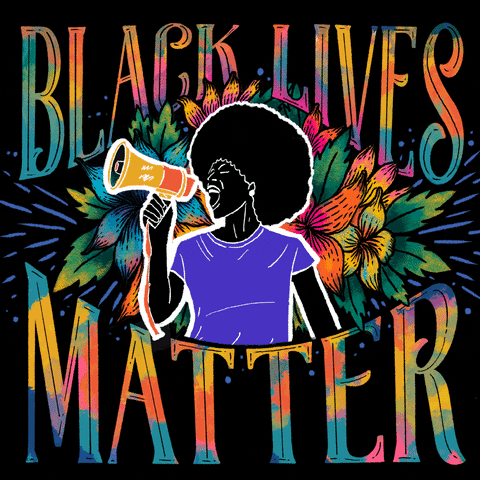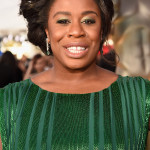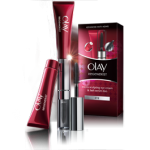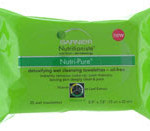In the wake of global protests around the killing of Black Americans at the hands of police, beauty brands have joined the voices of companies online professing that Black Lives Matter. However, it’s no secret that Black people don’t seem to matter to much of the mainstream beauty industry. If brands want consumers to believe their crafted statements on social media and their pledges to “do better,” they need to back it up with a radical shift in how their own industry functions and how their own brands operate.

Dear Brands, you want to know how you can help? Here are some places to start.
Products
1. One-size-fits-all products rarely fit all. Your bronzer literally cannot just come in one “universal” shade. That isn’t how human complexions work.
2. Invest in understanding the undertones of Black people. Even for brands who make wide complexion ranges, you’ll often find that those dark and deep shades are too red or too grey. We need more research done at the product development and cosmetic chemistry steps to ensure that brands have the technical knowledge to create shades that actually match humans.
3. Consider Black people in ALL product lines, not just foundation (or even complexion more generally). I’ve seen brands come out with 50 foundation shades but all the other products in their line don’t include products for dark-skinned people. If you don’t also make concealer, bronzer, blush, highlighter, etc. that work for dark skin then you aren’t truly inclusive.
4. The shade range and selection of your color cosmetics matters too. We need 1) more pigmentation/saturation in each shade and 2) deeper shade selections. First, to get good color payoff on dark skin, we need better pigmentation in products like blush, lipstick, eyeshadow, etc. If a lavender is going to show up on my skin, it needs to be pigmented and opaque, not sheer. Second, I don’t just want lavender; I want deeper shades as well that work for me. Making a purple eyeshadow palette? Well don’t make the deepest shade a medium purple. That might give a smoky effect on light to medium skin, but on dark skin we need a deeper purple to get the same effect. In fact, I wrote a whole post on how eyeshadow needs to be more pigmented for dark-skinned people. Another example: so many eyeshadow palettes are made with white consumers as the target and we can tell because you include multiple beige shades but only one medium brown. This tells me you see brown as a “color” but beige as a “neutral / skin tone shade.”
5. Format and layout of products must recognize the validity of Black people in the beauty sphere. I’ve come to dread products like blush palettes or face palettes, because often brands only dedicate a small fraction of the palette to shades that work for dark skin. If you have a 6-pan blush palette and only 1 works on my skin and 1 other might be able to work if I finesse it, then you aren’t recognizing Black people in your products. I’d rather you make separate light, medium, and dark blush palettes so every shade in each palette can work for its intended audience. Another example of formatting invalidating Black people: I see eyeshadow palettes with different-sized pans to indicate that bigger pans are shades people use more frequently. If you only make light beige and light browns in bigger pans, you are telling me that you aren’t considering a Black user. Black users won’t use those shades more than the other shades in the palette. In fact, often those shades might be unusable for many.
6. This one’s for the beauty retailers as well. Stop sending free samples that can only be used on light complexions or on European hair textures. I can’t count the number of times I get a free foundation sample and it only has 3 light to medium shades. I’ve gotten countless hair samples for adding volume to fine hair, but rarely see free samples catered toward Black people’s hair.
7. Speaking of retail: Stock a diverse range of your products in-store. So many drugstore brands will release a diverse or somewhat diverse foundation range of say 40 shades but only 15 will be available in stores and of those 15 only 2 will cater to dark skin. It’s not enough to have the product if Black people can’t try it on and/or buy it in a store. This is especially relevant for complexion products, where seeing the product in person can be particularly important to seeing if it matches your skin tone.
8. If you make a mini/travel sized version of a product, please make minis that Black people can use. Many brands will have a concealer in 30 shades, for example, but only make mini concealers in 5 shades and those 5 will be light or light to medium.
9. Collaborate with Black influencers to create products. When Black creators are at the helm and given the creative freedom to create products, they create products that can work on their skin tone and on other skin tones. For example, Jackie Aina’s collaboration palette with Anastasia Beverly Hills was made with Black people in mind and included pigmented, deep shades flattering on dark skin.
10. Get feedback from Black influencers on products you are developing and pay them for this work. Some brands have been known to send Black influencers products to test before they go to production to get their thoughts. Incorporate their feedback into your product to make it more dark skin-friendly.
Marketing
1. Include Black people of various skin tones in your ad campaigns. Show us in your advertising that you envision us wearing your products.
2. Show us non-photoshopped swatches of your products on dark skin tones. I’m much less likely to buy a product if I can’t find a swatch on dark skin. Products often look very different on dark skin than they do on lighter skin. Simply photoshopping your product onto a dark model does nothing to show Black people what they can expect from the product. It also defeats the purpose of showing swatches on multiple skin tones.
3. Corollary to the last item: Actually use Black models for swatches. Don’t just photoshop white models to be darker. Several brands have been exposed for simply photoshopping white model swatch arms darker. Not only is this horribly racist, it doesn’t give Black or dark-skinned consumers an accurate reflection of how the product will look on them
4. Diversify your feed. Show us many different skin tones on your social media pages. Many Black creators use products from brands and create free content for them by posting it on their social media pages. Promote those influencers by featuring their work on your feed. It also helps Black consumers see how your products work on people with similar complexions to them.
5. PR: Send (free products to test) to Black influencers. When buying makeup, I always prefer to see how it works on my skin tone. If I only see white influencers testing the product, that doesn’t give me an accurate demonstration. Sending product to Black influencers helps Black consumers make decisions about whether to buy your products.
6. Don’t just send products to Black influencers; actually pay them for their work. When someone creates a look and a brand reposts it, that influencer is essentially doing work for the brand for free. If a brand wanted to create its own content it would certainly be expected to pay for a model, makeup artist, hairstylist, photographer, etc. So why should they expect to be able to always repost influencers’ hard work for free?
7. Pay Black influencers the same you would pay white influencers with similar followings, engagement, and talent.
Business Structure
1. Hire Black employees, not just as freelance or temporary workers, but as full-time staff.
2. Hire enough Black employees so that they can each feel comfortable voicing their opinions. Being the only Black person in a room is difficult. That person might censor themselves if the room isn’t supportive. We need larger numbers if you want to create an environment of inclusion.
3. Give Black employees equal opportunity to be promoted to leadership positions. Ultimately, Black people need to be in positions of power to effect change in the beauty space.







